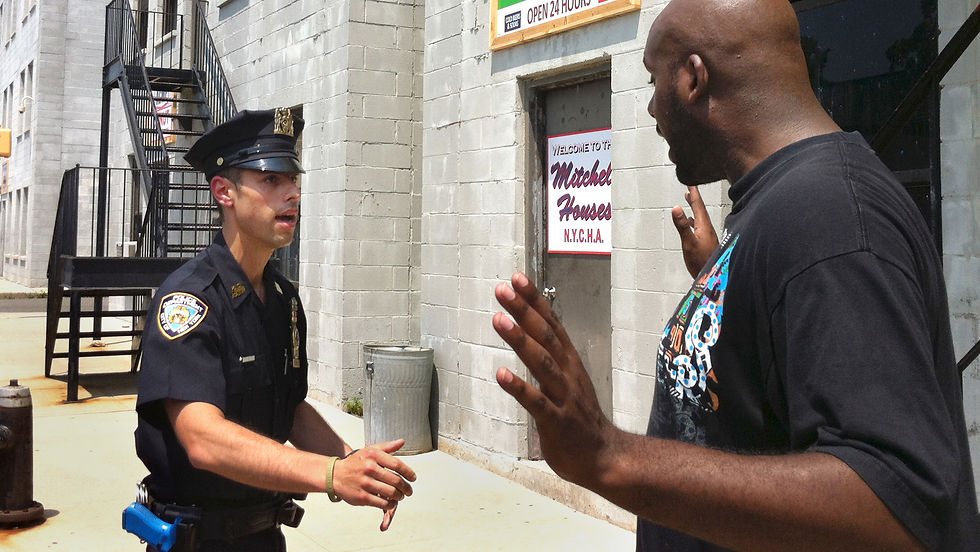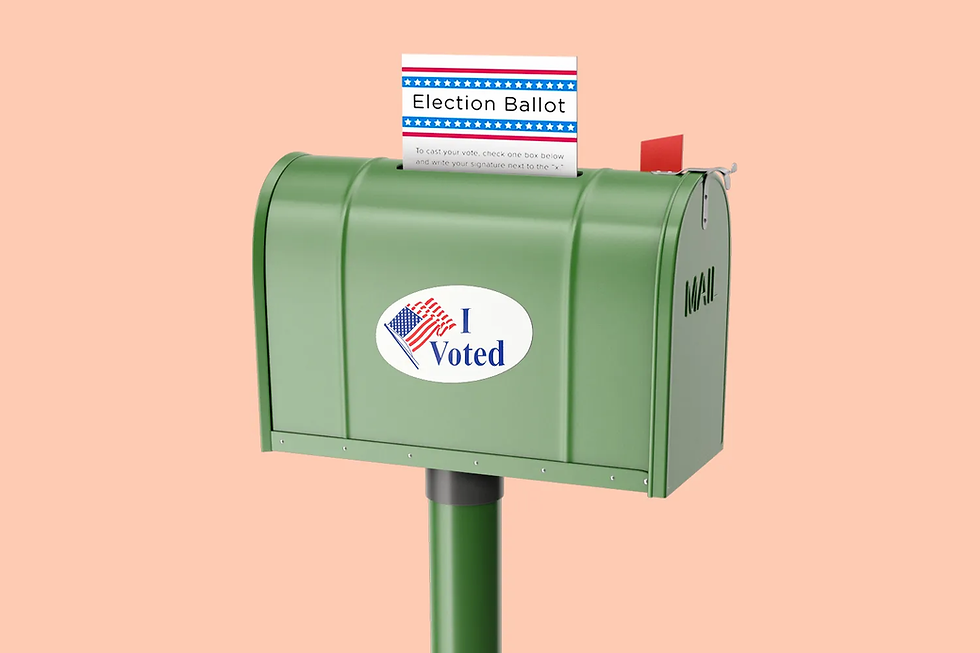How Proactive Policing Can Actually Cause More Crime
- Editorial Team

- Jun 9, 2020
- 4 min read

Photo: NPR
Proactive policing is a form of policing used by police forces all across the country. It refers to sending cops to lower income neighborhoods to show a strong police presence. The aim is to curb and prevent low level offenses which in turn, prevents higher level offenses. In theory, many people think this is a great approach to preventing crime. In reality, it can cause more stress and tension in neighborhoods that are already difficult to live in.
The Broken Window Theory is a prime example of proactive policing. It basically says that police should focus on lower income neighborhoods and areas that have visible signs of “crime”, such as graffiti or literal broken windows. By over-policing these areas, they are preventing future, higher level crime. This type of policing has very little evidence of working and it often causes tension between the community and the police department.
By having a large police presence in these types of neighborhoods, the people feel as though they are being targeted and racially discriminated against. And when the cops hand out citations and fines for low level offenses, the citizens are burdened even more with fines they cannot pay. The police are giving out more citations to these people in these areas more than they would to people in other areas for the same crimes. This is because they are discriminating against the minority and low income families by thinking they are the ones that are going to commit the larger crimes later on. But when the police are fining and giving out so many citations, it can actually lead to the citizens committing more crimes because of the increased hardships by the police.
This Broken Windows application has really just led to further racism. In a nicer neighborhood, a cop might issue a warning to a person skateboarding or drinking, but in the areas they are targeting, they often issues summonses or fines.
In Newark, NJ, officers would hand out citations for low level offenses, called blue summonses. In theory, they were meant to curb future crime but officers with high numbers of citations would often receive raises and bonuses. Clearly, the police officers were being incentivized to issue summonses, even for the smallest offenses. They would find “crime” even if it was barely a crime at all. These practices just made the communities distrust the police even more.
In fact, a recent study proved that adolescent, minority males that were approached by police for strop and frisk, were more likely to engage in criminal behavior after the fact. The study had 637 boys and even the ones that did not engage in delinquent behavior before the police interaction, became more likely to after.
In another report in Nature Human Behaviour, criminologists Christopher M. Sullivan and Zachary P. O’Keeffe talk about how proactive policing actually causes more crime. In 2014-2015, the NYPD staged a slowdown in which they only performed essential duties and left out proactive policing. This slow down actually led to a decrease in major and minor crimes. With less police constantly patrolling the streets, there was actually less crime.
O’Keeffe and Sullivan state, “The results imply that aggressively enforcing minor legal statutes incites more severe criminal acts” And that aggressive proactive policing “disrupts communal life, which can drain social control of group-level violence”.
Although this type of policing can cause more harm than good, there are ways to actually improve the community. Instead of issuing citations left and right to get a promotion, officers need to focus on the real needs of the community. Talk with the residents and listen to what they are saying needs to change. Focusing on the betterment of the community rather than creating crime is a great way to actually improve not only the community, but the relationship between the people and the police.
Camden, NJ is one of the cities that has taken a new approach to policing that has actually decreased crime. Camden has long been considered one of the most dangerous cities in the US, but in 2013, they disbanded their police department as they knew it and created a new one. The new police department was focused on community development and trust between the citizens and the police. Since 2010, the city has had a roughly 41% reduction among the seven major categories — murder, rape, robbery, assault, burglary, and larceny. The police officers also spend more time on the training of de-escalation. They are trained to use their gun only as a last resort.
It is clear that proactive policing via stop and frisk and the broken window model can be detrimental to the communities the police officers are sworn to protect. Discrimination and racism deter the cops from doing their job effectively and the community suffers because of it. In order to create a more fair and just community, police departments need to reevaluate their motives and values. Camden is still far from perfect, but their approach to community policing is a step in the right direction. Police departments across the country should take into account what happened in Camden and how a community based police effort can benefit the community as a whole.
“Camden City Experiences Historic Drop In Crime Rate, New Study Claims.” SNJ Today, 7 Jan. 2020, snjtoday.com/2020/01/07/camden-city-experiences-historic-drop-in-crime-rate-new-study-says/. Accessed 9 June 2020.
Childress, Sarah. “The Problem with ‘Broken Windows’ Policing.” FRONTLINE, Frontline PBS, 28 June 2016, www.pbs.org/wgbh/frontline/article/the-problem-with-broken-windows-policing/. Accessed 9 June 2020.
Del Toro, Juan, et al. “The Criminogenic and Psychological Effects of Police Stops on Adolescent Black and Latino Boys.” Proceedings of the National Academy of Sciences, vol. 116, no. 17, 8 Apr. 2019, pp. 8261–8268, www.pnas.org/content/116/17/8261, 10.1073/pnas.1808976116. Accessed 9 June 2020.
Holder, Sarah. “Five Years After a Police ‘Reset,’ Murders Plunge in a Once-Deadly City.” CityLab, 10 Jan. 2018, www.citylab.com/equity/2018/01/what-happened-to-crime-in-camden/549542/.
Kaste, Martin. “Studies Show ‘Proactive Policing’ Works, But Social Cost Less Clear.” NPR.Org, 9 Nov. 2017, www.npr.org/2017/11/09/562876139/studies-show-proactive-policing-works-but-social-cost-less-clear. Accessed 9 June 2020.
Khan, Amina. “In New York, Major Crime Complaints Fell When Cops Took a Break from ‘Proactive Policing.’” Los Angeles Times, 26 Sept. 2017, www.latimes.com/science/sciencenow/la-sci-sn-proactive-policing-crime-20170925-story.html. Accessed 9 June 2020.
O’Grady, Cathleen. “NYC Cops Did a Work Stop, yet Crime Dropped.” Ars Technica, 26 Sept. 2017, arstechnica.com/science/2017/09/nyc-cops-did-a-work-stop-yet-crime-dropped/. Accessed 9 June 2020.
Rodas, Steven. “Camden Sees Crime Drop Over Past Decade.” TAPinto, 12 Jan. 2020, www.tapinto.net/towns/camden/sections/law-and-justice/articles/camden-sees-crime-drop-over-past-decade. Accessed 9 June 2020.
Weichselbaum, Simone. “More Cops. Is It the Answer to Fighting Crime?” USA TODAY, USA TODAY, 13 Feb. 2019, www.usatoday.com/story/news/investigations/2019/02/13/marshall-project-more-cops-dont-mean-less-crime-experts-say/2818056002/.



Comments